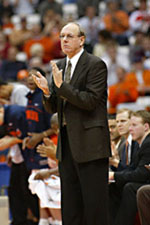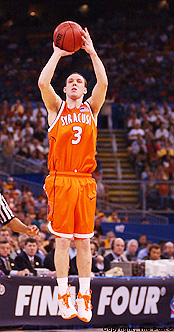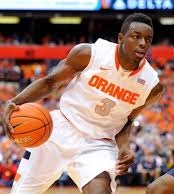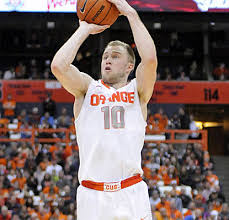The question rises each season as the conference post season
tournaments begin: is the team better
off losing the tournament to rest themselves for the NCAA tournament, or is it
better to win the tournament and keep the momentum going?
Syracuse does have 34 years of Big East history to draw
from. Five times Syracuse won the Big
East Tournament. The Orange were only
2-4 in the NCAA tournament those years, never advancing beyond the second
round. That seems to be pretty damning
evidence. These were the seasons:
1980-81, 1987-88, 1991-92, 2004-05 and 2005-06.
Some of those losses can be mitigated. In 1980-81, the Orangemen won the Big East
Tournament, and because the conference was only in its second season there was
no automatic qualifier. The NCAA ignored the Orangemen, relegating the Orangemen
to the NIT, so Syracuse played no NCAA game that year. However, the Orangemen did do very well in
the NIT going 4-1, and losing in overtime to Tulsa in the NIT Finals. That is a
very successful post season.
The Orangemen in 1987-88 beat North Carolina A&T in the
first round, and then were upset by Rhode Island in the second round when
Sherman Douglas struggled with a high fever and cold.
The Orangemen in 1991-1992 beat Princeton in the first round
before losing to higher ranked UMass in the second round.
The Orange in 2005-2006 had the embarrassing first round
loss to Vermont.
The Orange in 2005-2006 was the year that Gerry McNamara
carried the team to a Big East Championship.
The Orange lost to Texas A&M in the first round with an injured GMac
struggling to score. However, the Orange would not even have qualified for the
NCAA had they not won the Big East Tournament, so it is tough to count the NCAA
post season failure against their winning the Big East Title.
Regardless of the reasons, 2-4 in the NCAA following a Big
East Title is fairly strong evidence that the Tournament takes a lot out of
you.
However, ten times the Orange played in the Big East
Championship and lost. That means an
additional 10 times they played just as many games as they would have had they
won the tournament, and they had the extra baggage of losing their last game
before the NCAA Tournament. The Orange
are 21-9 in the NCAA Tournament when they lost in the Big East Championship. Never had the Orange lost in the NCAA first round
when they reached the Big East Finals and lost.
They lost in the second round twice, in the Sweet Sixteen 4 times, Elite
8 once, the Final Four once (2013) and the NCAA Championship Game once (1987). They were banned from NCAA Post season action
in 1993, so no wins or losses that year.
And consider the 2008-2009 team that reached the Big East
Finals. That was the year of the epic 6
overtime win over Connecticut, followed by an overtime win against WVU in the
semi-finals. The Orange would lose to
Louisville in the finals, but would play the equivalent of 4 7/8 games in four
nights. That team would go 2-1 in the NCAA Tournament, losing to higher seeded
Oklahoma in the Sweet Sixteen. Fatigue
was not an issue there.
When you combine the two sets, you have fifteen seasons the Orange
went to the Big East Championship game (five wins, ten losses). The Orange were 23-13 in the NCAA Tournament
following following playing in the Big East Tournament Championship game,
reaching the Final Four Twice.
Compare that to how the Orange have done in the NCAA
following Big East Tournaments where they did not reach the Big East Finals (19
times). The Orange went 27-13 in the
NCAA Tournament, reaching the Final Four two more times, including the 2003
National Championship. Five of those
seasons they did not even reach the NCAA; they were regulated to the NIT
Tournament.
So we are really comparing going 23-13 versus 27-13, two
Final Fours on each side of the ledger.
I don’t see a real difference there, not one to suggest that it’s better
to than the conference tournament in favor of the NCAA.
Given that, let’s go ORANGE!
Let’s do some damage in the ACC Tournament.










